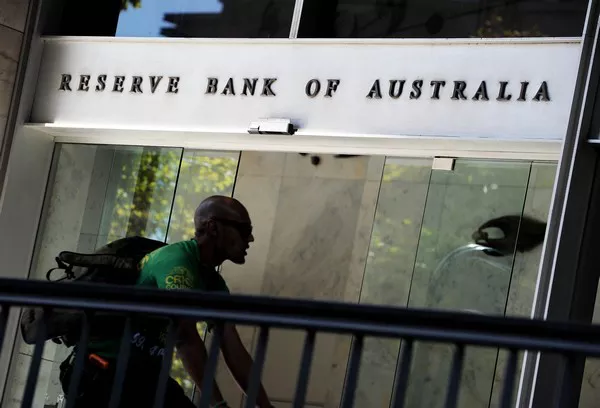In the dynamic landscape of finance and economics, acronyms and abbreviations often play a crucial role in shaping policies and driving decision-making processes. One such acronym that holds immense importance in the realm of central banking and monetary policy is RBA. Standing for Reserve Bank of Australia, the RBA is a pivotal institution that wields significant influence over the country’s economic well-being. In this article, we will delve into the meaning of RBA, exploring its functions, responsibilities, and its impact on Australia’s financial landscape.
Defining RBA
The Reserve Bank of Australia (RBA) is the nation’s central bank, established in 1960. Its primary mandate is to formulate and implement monetary policy with the aim of maintaining price stability, full employment, and the economic prosperity of the Australian people. The RBA operates independently of the government, allowing it to make decisions free from political pressures, a key feature of many central banks worldwide.
Functions and Responsibilities
Monetary Policy Formulation: One of the core functions of the RBA is to formulate and implement monetary policy. This involves managing the money supply and interest rates to achieve the broader economic goals of price stability and full employment. The RBA utilizes a range of tools, including setting the official cash rate, to influence economic activity.
Currency Issuance: The RBA has the sole authority to issue and regulate the Australian dollar. It ensures the integrity and security of the currency in circulation, working to maintain public confidence in the monetary system.
Financial Stability: Maintaining the stability of the financial system is another crucial responsibility of the RBA. It oversees and regulates financial institutions, aiming to prevent disruptions that could have adverse effects on the economy.
Payment Systems Oversight: The RBA plays a key role in overseeing the payment systems that facilitate transactions in the economy. It works to ensure the efficiency and reliability of these systems, promoting the smooth functioning of financial markets.
Economic Research and Analysis: In addition to its operational functions, the RBA engages in extensive economic research and analysis. This involves monitoring domestic and international economic trends, providing valuable insights that inform its policy decisions.
Implications of RBA Decisions
The decisions made by the RBA have far-reaching implications for the Australian economy. The most widely watched decision is the setting of the official cash rate, which influences interest rates throughout the economy. Here are some key implications of RBA decisions:
Interest Rates and Borrowing Costs: The official cash rate set by the RBA directly affects interest rates in the broader economy. Changes in interest rates influence borrowing costs for businesses and individuals, impacting spending and investment decisions.
Inflation and Price Stability: The RBA aims to keep inflation within a target range, usually between 2% and 3%. By adjusting interest rates, the RBA seeks to control inflationary pressures and maintain price stability, which is crucial for sustainable economic growth.
Exchange Rates: RBA decisions also influence the Australian dollar’s exchange rate. Changes in interest rates and monetary policy can affect the attractiveness of the Australian dollar to foreign investors, impacting its value in international markets.
Employment and Economic Growth: Through its focus on full employment and economic prosperity, the RBA plays a role in shaping the overall growth trajectory of the Australian economy. Policies that stimulate economic activity can contribute to job creation and increased prosperity.
Financial Market Responses: RBA announcements and decisions are closely monitored by financial markets. Changes in interest rates or shifts in monetary policy can lead to significant movements in stock markets, bond yields, and currency markets.
Challenges and Criticisms
While the RBA plays a crucial role in maintaining economic stability, it is not immune to challenges and criticisms. One ongoing challenge is the balancing act between promoting economic growth and managing inflation. Additionally, the effectiveness of monetary policy tools, especially in a rapidly changing global economic environment, has been a subject of debate.
Critics have argued that the RBA’s focus on inflation targeting may not be sufficient to address all economic challenges, particularly those related to employment and income inequality. Moreover, the potential limitations of traditional monetary policy in the face of unconventional economic conditions, such as those presented by the COVID-19 pandemic, have prompted discussions about the need for a more holistic approach to economic management.
See Also How Does The Rba Work?A Comprehensive Analysis
Conclusion
In conclusion, the Reserve Bank of Australia (RBA) is a linchpin of the nation’s economic framework, wielding significant influence over monetary policy, financial stability, and economic growth. Its decisions, particularly those related to interest rates, reverberate throughout the economy, impacting borrowing costs, inflation, and exchange rates. While the RBA faces challenges and criticisms, its role remains integral to steering the Australian economy through the complexities of the global economic landscape. Understanding the meaning of RBA is not merely an exercise in financial literacy but a key to grasping the intricacies of economic policymaking and its profound effects on the lives of the Australian people.


